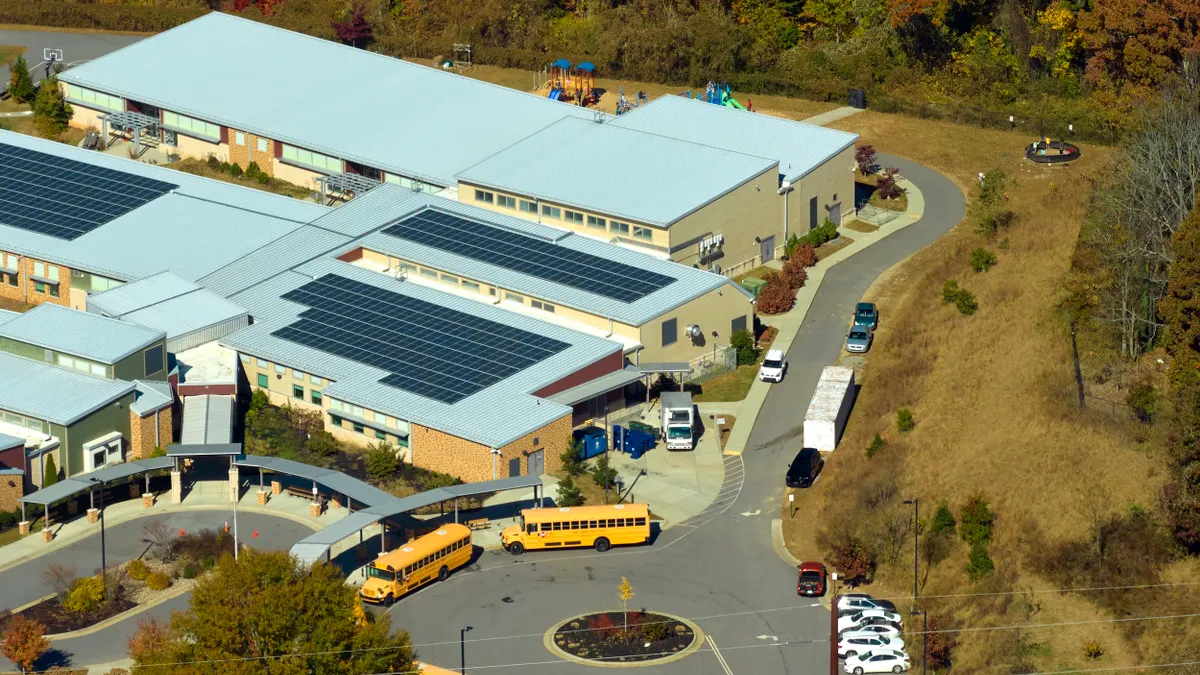It’s no secret that electricity prices are increasing, and for schools dealing with tight budgets, these higher costs are a significant challenge. But they don’t have to be — as the co-founder of a company that has deployed more solar at schools than any other developer in Virginia, I’ve seen how onsite solar saves schools and districts millions of dollars.
Yet all too often, promising projects stall before they begin. It’s not because the numbers don’t work or that solar isn’t feasible at a particular site. Instead, it’s because the conversation isn’t framed correctly. Many times, “going solar” is interpreted through an ideological or political lens, but saving taxpayer dollars isn’t inherently a political issue.
School leaders and administrators seeking to reduce operating expenses can change the discussion by understanding — and communicating — how a power purchase agreement (PPA) benefits their school. By taking cultural and political baggage out of the equation, school boards, parents and community stakeholders can focus on the economic and educational benefits, thereby leading to more productive discussions and better decisions for K-12 schools.
What is a PPA?
A PPA is an electricity procurement contract where a solar developer finances, builds, owns and operates a solar array at a buyer’s property. The developer then sells the solar-generated electricity to the buyer at a pre-determined rate, which is typically cheaper than what the local utility charges.
PPAs are usually contracted for 25 to 30 years. Installation of the solar array can be on rooftops or the ground, and all maintenance is included in the contract. This means schools and districts don’t have to allocate capital funds to install solar, but can still benefit from the cheaper electricity it generates.
It’s important to note that the installation of a solar array does not require a school to disconnect from the local utility. Rather, the two electricity sources operate in parallel. If the solar array is not providing 100% of the facility’s electricity needs at any given moment — which could be due to weather conditions or scheduled maintenance — the utility automatically supplies the rest.
School leaders may ask how this benefits the developer, and the answer is that developers make money by selling the electricity to the host, in this case, a school or district. Their incentives are also aligned with those of the school — if the solar array is not producing electricity, the developer is not achieving their goals for the project.
How schools benefit from solar PPAs
Saving money is the most notable benefit, and it’s this aspect that school boards and other stakeholders need to be aware of when discussing a potential PPA. With onsite solar, electricity is generated right where it’s used — at the school itself. This reduces reliance on the broader utility system and can avoid many of the costs tied to traditional energy delivery. Framing solar in terms of local cost control and efficiency, rather than as a political issue, can help stakeholders stay focused on practical benefits.
Energy independence is also a matter of school choice, not in the sense of picking a school to attend, but in terms of how that school operates. Saving taxpayer money through a PPA shows the community that a school or district is fiscally responsible. Freeing up money in the operating budget can offer the opportunity for districts to consider redirecting those funds towards other priorities.
Solar power even provides unique educational opportunities for students. Solar Empowered Schools, a digital platform from Madison Energy Infrastructure, provides access to educational content that integrates lessons with the school’s solar energy system. This content can be lessons about the sun for elementary students, or data analysis from the solar array for older students. In high schools, these programs focus on career development as well. In short, the benefits range from economic to educational.
Real-world successes with solar
I’m fortunate to say I’ve been part of numerous K-12 school installations that are saving money and improving operations. Fluvanna County Public Schools in Palmyra, VA, for example, has five schools powered by solar. The district is estimated to save over $10 million on energy costs over the 25-year life of the PPA, and four of the schools are 100% powered by solar-generated electricity. We worked closely with the school board and all stakeholders to ensure that the economics were right for the schools, the district as a whole, and the community.
Similarly, Stafford County Public Schools, also in Virginia, faced rising and unpredictable energy costs as their district was growing. They had a large-scale solar array installed on the roof of North Stafford High School that came online in 2024, and it supplies 84% of the school’s energy needs at a lower cost. It’s estimated that it will save nearly $3 million over the project’s lifetime.
Installations don’t have to be large to make an impact — Loyalsock Township Schools in Williamsport, PA, has just two schools powered by solar, but the total capacity is 1.6MW, which is enough to power approximately 400 homes.
Focus on the issues
Energy has become so polarized that sometimes a common-sense decision gets misunderstood or lost in the noise. For school leaders who need to do more with less, a solar PPA is a matter of stewardship — of taxpayer dollars, school resources and educational opportunities.
By keeping the discussion focused on these benefits and not politically charged beliefs about how energy should be produced, we can improve finances and educational opportunities at schools nationwide, and that’s a win for students and their communities.
Contact Madison Energy Infrastructure to learn more about how solar PPAs can benefit your school










